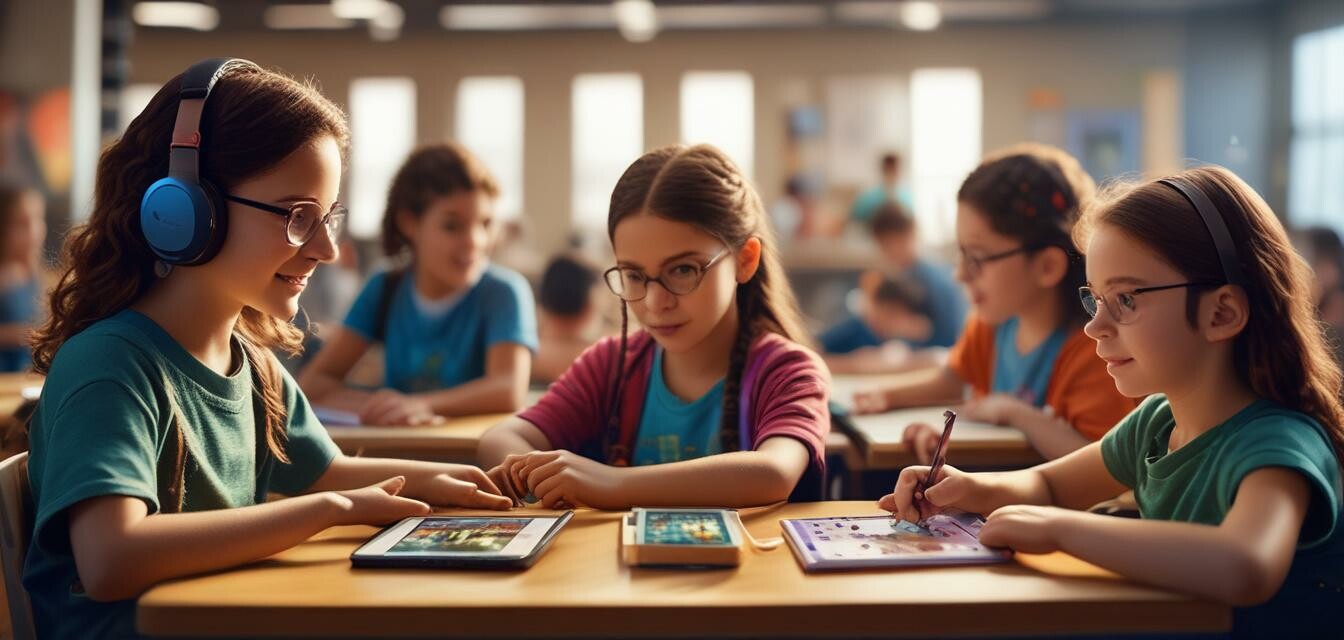
Gamification of Learning: How It's Evolving in 2025
Key Takeaways
- Gamification increases engagement in educational content.
- Interactive elements make learning more enjoyable for kids.
- Technology integration is crucial for an immersive experience.
- As play becomes central, parents seek balance between fun and learning.
- Educational trends emphasize creativity and critical thinking through games.
As we venture into 2025, the landscape of education for children is greatly shifting thanks to the rise of gamification. This trend merges learning with play, making educational content engaging and interactive. Let’s explore how this transformation is taking shape and influencing both children's learning experiences and educational tools.
Understanding Gamification and Its Importance
At its core, gamification refers to the incorporation of game design elements in non-game contexts to boost engagement and interaction. In educational settings, gamified learning involves the use of game mechanics to encourage children to participate and immerse themselves in the learning process.
Why Gamification Matters
- Engagement: Kids are inherently drawn to play, and by blending educational content with game-like elements, their motivation to learn naturally increases.
- Retention: Children are more likely to remember information they encountered during fun, interactive activities as opposed to traditional learning methods.
- Skill Development: Games foster essential skills like problem-solving, critical thinking, and teamwork, which are all vital for personal and academic growth.
Current Trends in Gamification for 2025
As we look closely at the trends shaping gamification today, we can identify key innovations that are enhancing children's learning experiences. Here’s an overview in the table below:
| Trend | Description |
|---|---|
| Interactive Learning Platforms | Platforms that provide engaging lessons integrated with challenges and activities where kids can earn rewards. |
| Augmented Reality (AR) | Utilization of AR to create immersive educational experiences, bringing subjects like history and science to life. |
| Collaborative Online Games | Games designed for multiple players, encouraging teamwork and communication skills among peers. |
| Learning Analytics | Tools for monitoring children’s progress in game-based environments to provide personalized learning experiences. |
How Gamification Enhances Education
The application of gamification strategies in educational resources encourages children to explore, experiment, and achieve success in a stimulating environment. Here are some ways gamification enhances education:
- Increased Participation: Gamified lessons often see higher participation rates as kids are eager to engage in challenges.
- Real-Time Feedback: Many gamified tools provide instant feedback, helping students identify areas for improvement immediately.
- Personalization: Children can progress at their own pace, making learning experiences customized to their needs.
Balancing Play and Learning
While gamification presents attractive learning methodologies, it’s crucial for parents and educators to maintain a balance between entertainment and education. Here are some tips:
Beginner's Tips for Parents and Educators
- Choose quality educational games that are aligned with learning goals.
- Monitor screen time to ensure a healthy balance between play and other learning methods.
- Encourage discussions about what they are learning through gaming, reinforcing the educational concepts.
The Future of Gamification
Looking ahead, gamification will continue to evolve. As new technologies emerge, educational tools will incorporate even more innovative features that make learning both fun and effective. Trends show that:
- More AI-driven educational games will adapt in real-time to suit the individual learning pace of each child.
- Integration of STEM principles with gamified experiences will rise, emphasizing critical skills for the future workforce.
- Ethical considerations in game design will take center stage, ensuring content is educational, inclusive, and appropriate.
Pros
- Increased motivation and engagement in learning.
- Improved retention of information through interactive elements.
- Development of essential cognitive and social skills.
Cons
- Over-reliance on technology can detract from traditional learning methods.
- Some educational objectives may be lost in the fun-focused approach.
- Excessive screen time could impact children's health if not monitored.
Conclusion
In summary, the gamification of learning in 2025 showcases an exciting evolution in educational strategies. By integrating play with educational content, we are facilitating an environment that not only captivates children’s attention but encourages them to thrive academically. As parents and educators continue to adapt these methods for future generations, the focus remains on achieving a harmonious balance between fun and learning for a holistic educational experience.
To stay updated on related trends in gaming and kids' electronics, check out our News and Trends section for more informative articles.
Explore Related Topics
Interested in learning more about gamification and its impact on education? Discover valuable insights on our Buying Guides page or explore various products in our Kids' Educational Electronics category. You can also find different Plug & Play Gaming Systems or check out the latest Nintendo Switch Games!